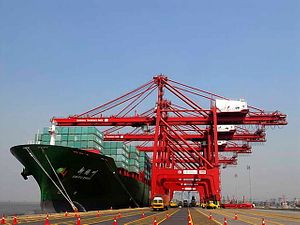India has always affirmed the value of multilateralism and the rule-making process under the World Trade Organization (WTO). However, an increasingly large proportion (some two-thirds) of global trade is being conducted under bilateral and regional free trade agreements (FTAs) and comprehensive economic partnership agreements (CEPAs), by including trade in goods, services and FDI. This trend is a marked departure from the Most-Favored Nation (MFN) principle of non-discrimination, the erstwhile General Agreement on Tariffs and Trade (GATT), and today’s WTO.
Viewing these trade and economic partnership agreements are building blocks towards achieving the objectives of multilateral trade liberalization and freer trade flows, the agreements are legally allowed in the realm of goods by the GATT Article XXIV and the Enabling Clause; and in the domain of services by Article V of the General Agreement on Trade in Services (GATS). It is for this reason that the developed countries have formed NAFTA and the EU. Asia, including India, is a latecomer to this dynamic of trade and economic partnership agreements.
More recently, the world has been witnessing a trend in global trade segmentation, with ongoing negotiations under three mega groups: the Trans-Pacific Partnership (TPP), the Transatlantic Trade and Investment Partnership (TTIP) and the Regional Comprehensive Economic Partnership Agreement (RCEP). India does not participate in the former two, and participates only in the ASEAN+6 grouping which is negotiating the RCEP.
With a shift in economic gravity towards Asia, India’s major economic interests lie in the RCEP, not to mention that by geographical definition India cannot be a part of the TTIP, and India has not been invited to join the TPP. In addition, with the inclusion of the so-called platinum standards in the TPP and the TTIP, defined as government procurement, labor standards, environmental standards, competition policy and intellectual property rights(in a WTO Trade-Related Aspects of Intellectual Property Rights (TRIPS) Plus framework), it is considered inadvisable for India to be a part of these groups. This is because, while it is imperative for India to work and refine these policies at the national level, it should not undertake any internationally binding commitments on these issues, given its present stage of development.
This leaves India to play a proactive role in setting the agenda in the RCEP, along with China, Japan, and others such as ASEAN, South Korea, Australia and New Zealand. This may include several dimensions. First, the aim should be to achieve substantial trade coverage, which is required for WTO consistency, and could be in the range of 90-95 percent of both trade volumes and tariff lines. For this, the India-Japan CEPA and China-ASEAN FTA could be reference points.
Second, rules of origin need to be carefully designed to achieve multiple objectives in manufacturing, value addition, employment generation and value chain facilitation. Since the emphasis of rules of origin is on local value addition and manufacturing, it can play a developmental role through backward-forward /input-output manufacturing linkages. It can also facilitate the creation of value chains, especially through regional cumulation mechanisms. Contrary to popular belief, rules of origin have not been responsible for under-utilization of FTAs, as studies focusing on the Asia-Pacific have shown. The concerns relating to rules of origin are more related to better, efficacious implementation, rather than the desirability of the rules, per se.
Third, India must play its role in determining the scope of RCEP negotiations by not including the platinum standards, given that India’s developmental imperatives, along with China and other less-developed countries in ASEAN like Cambodia, Laos, Myanmar and Vietnam, are unique both in terms of scale and level.
Fourth, it is important to bear in mind that India’s trade deficits with Asia-Pacific partners should not be always viewed as a negative. Trade deficits reflect supply-demand gaps, and imports cannot be thrust upon any country under a particular trade and economic cooperation agreement. Indian importers must find it an economically viable and price-competitive option to trade with other countries. Thus, rather than blaming trade and economic cooperation agreements, one should appreciate their role in making cheaper imports possible, often in raw materials, intermediates, capital goods and consumer goods.
Fifth, it is crucial for India to economically integrate with South Asian countries in a framework of shared prosperity and integrated economics, for trade in goods and services, investment, technology and human resources. Areas of cooperation need to include finance, energy, environment, water resources, and digital.
Sixth, India must get ready to be a hub that facilitates the seamless flow of economic variables, people and ideas across East, Southeast, South, Central and West Asia. India can play an important role in contributing to the age-old Silk Road, connecting the Far-East to the Far-West, with economic activities spread all over Eurasia as well. This would strengthen regional value chains, and harness a more efficient regional division of labor, in the context of regional mismatches in skill.
Finally, India’s economic engagement, while on the rise with Africa and Latin America, needs a fresh impetus. It also needs to reorient itself towards Central America. Most importantly, in cooperation with other WTO members, India must provide intellectual and negotiating leadership in concluding the Doha Round of WTO negotiations. Several areas of non-agricultural market access (NAMA), GATS, TRIPS and Rules, among others, call for a more cohesive, inclusive and developmental approach. Negotiations need to be targeted on consensus-building across the developing world, but perhaps more importantly between the developing and developed worlds. This has proved quite elusive thus far, and India’s role will prove to be crucial when the new government prioritizes its global economic engagements.
Ram Upendra Das is an economist and presently professor at Research and Information System for Developing Countries (RIS), New Delhi. The views expressed here are the author’s own.

































